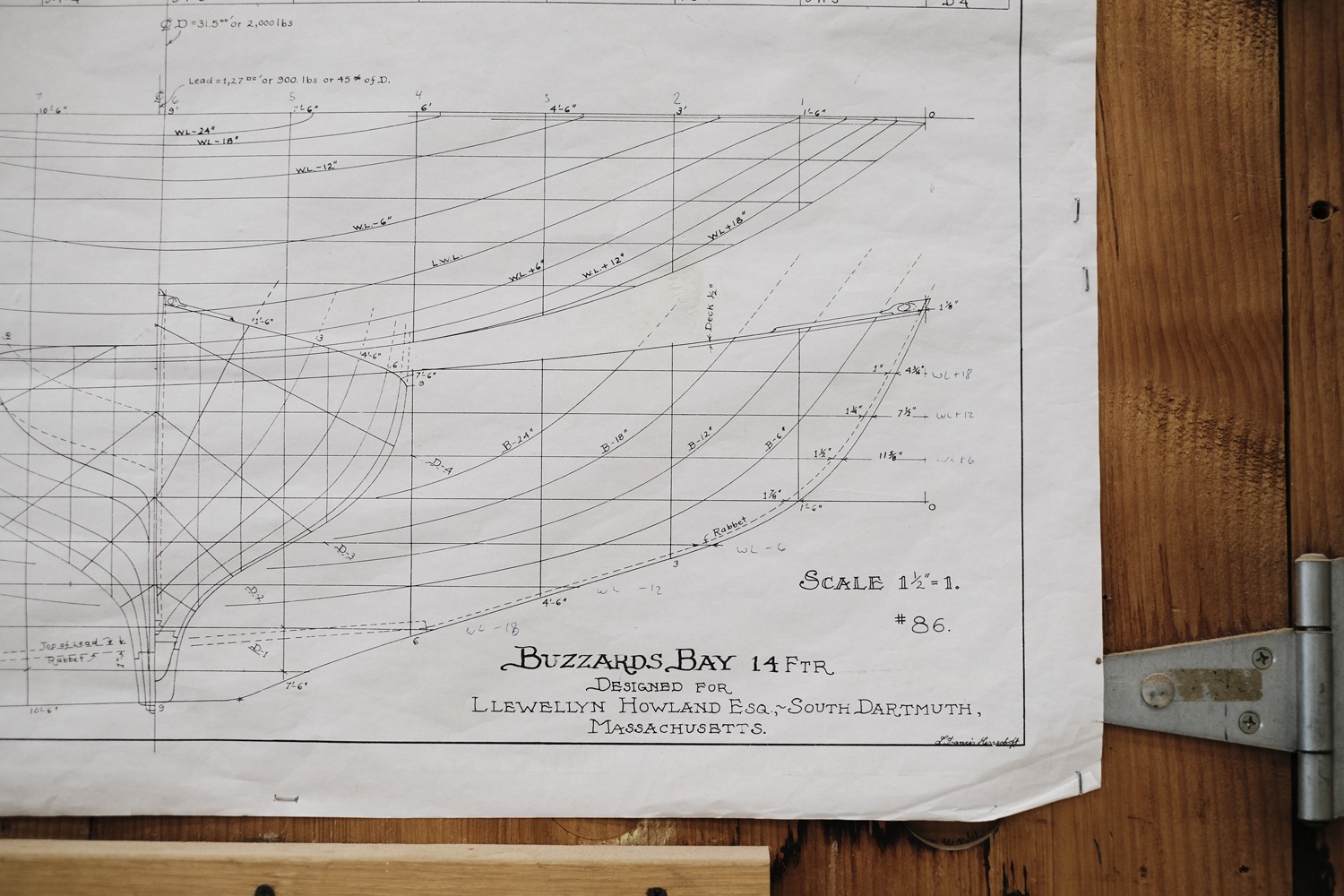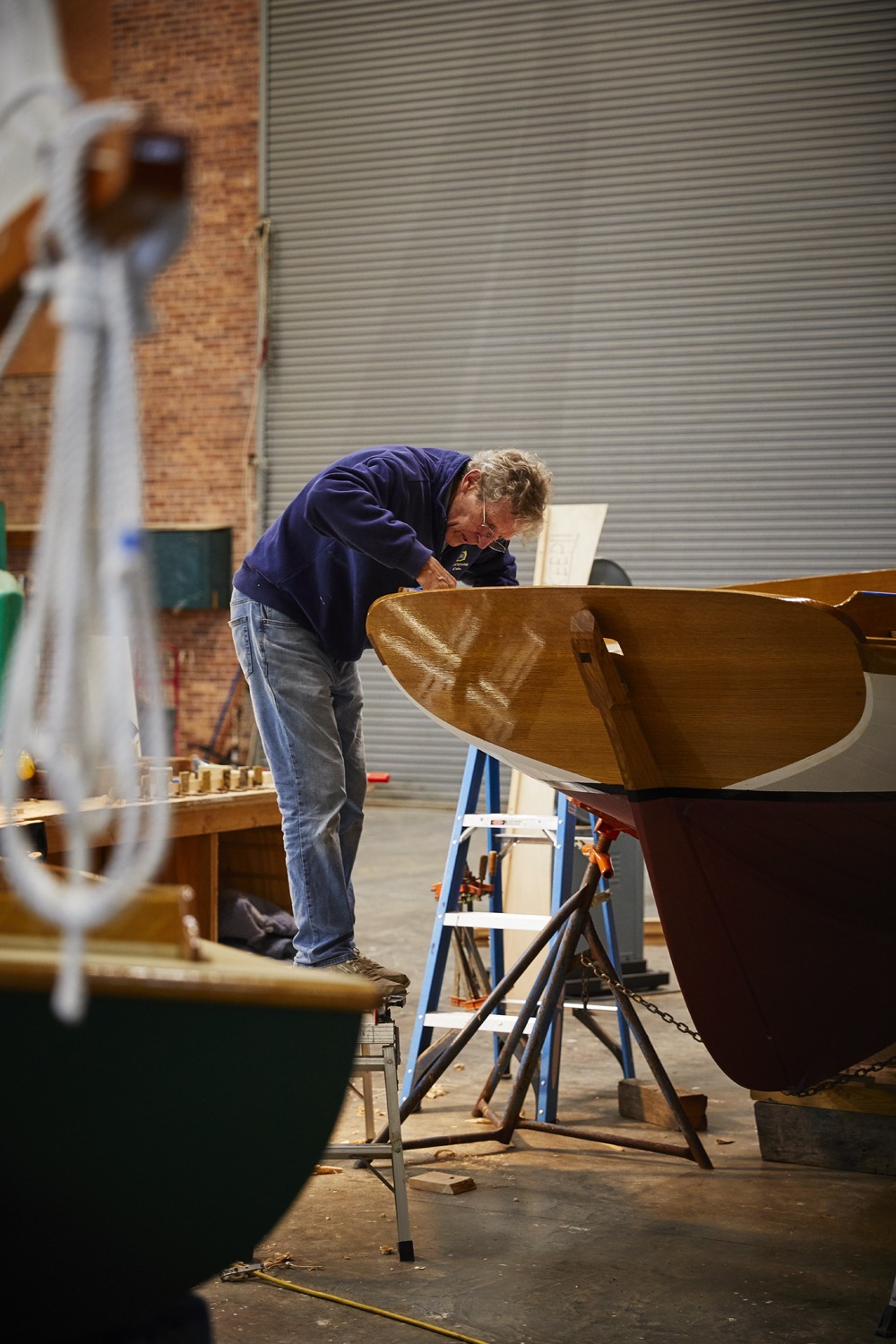Nurturing the craft of wooden boat building and located on the waterside of Newport, Rhode Island’s main tourist thoroughfare, is The International Yacht Restoration School, or IYRS.

Over the years hotels, restaurants, shops, and condos have crept shoreward and skyward in Newport’s downtown district, creating physical and visual barriers to one of the United States’ most prestigious sailing harbors. A rare point of access to the waterfront, IYRS is an open campus where all are welcome to explore, while the school itself focuses on a time-honored craft, both beloved and unique.
Each semester the school welcomes a new wave of students who will learn to build and/or restore wooden boats. These students typically have little to no background in boat building but are looking for a connection to not only the raw material, but also to the analog process of making utilitarian sculptures with their hands.


Warren Baker, a teacher at IYRS since 2003, knew that a career in banking or insurance was not going to give him any sense of fulfillment. After working for furniture maker Ian Kirby, Warren spent some time with a boatbuilder in Maine, fell in love with the process, and never turned back. At one point, while working at a shop that built composite race boats out of “space age materials”, he mentioned to the owner that the dull grays and tans of the unpainted boats were depressing—a fixation that led him to work exclusively with wooden boats. Soon, he was making custom crafts in his garage in Massachusetts. He lives for it still.
Most vessels are built upside down so that for the first stages of the build, they are nothing but sculpture. After the rough form takes shape, the skeleton is flipped over for the finishing touches. Still, it is simply furniture. The shift occurs when the hull is finally lowered into the water. Only then does it become a boat.



As the digital tide creeps higher and technology promises to replace manual labor, the impartation of an age-old craft is our only resistance to change. IYRS and its dedication to a slow craft represents utility in its most beautiful form: a form that is necessary. A wooden boat does not require chemicals, expensive fiberglass molds or digital instruments. It requires time and foresight. Tools are passed down through the generations. Boatbuilders pride themselves on their collection of well-worn chisels and hand drills.
 IYRS
IYRS
Warren Baker was able to create a life surrounded by wooden boats. While he worked to cut, bend, and shave wood in his backyard studio, crafting custom boats for discerning clientele, others in the boatbuilding world worked their farmland in the summer and retreated to the woodshop in the winter. Now, as he continues each year to pass along his knowledge of woodworking to students at IYRS, he understands that this knowledge contains the energy and momentum to carry the tradition forward to the next generation. His students will have the opportunity to exercise their expertise at shipyards, maritime museums, or work as custom boat builders. And maybe some will find success in a small woodshop in their backyards, like Baker himself.


At the end of each semester the students of IYRS, surrounded by teachers, friends, family, and wooden boat enthusiasts stand on the edge of Newport Harbor as they watch their semesters’ long projects set off on their maiden voyages.
Their creations started as numbers in notebooks, converted to complex drawings, were translated to a sculptural hull, finished with varnish, brass and canvas fittings and finally, within a few hours of touching water for the first time, became boats.






